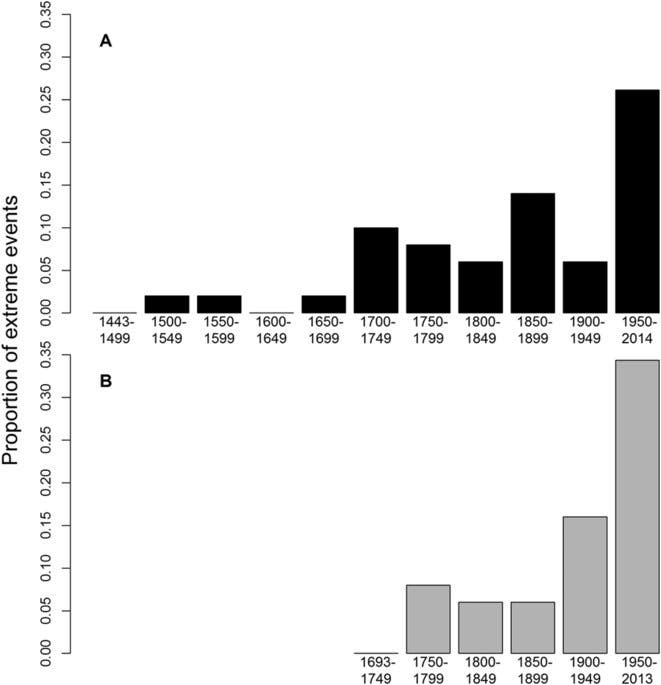If you’re old enough, you might remember how some flowers around where you live blossom earlier or that summers and winters are unusually harsh. In short, freak weather is more common to the point it’s becoming the new norm. Human memory is fallible, which is why we keep records of things like temperature, humidity, the concentration of gases in the atmosphere and so on. These records don’t go back that long, though — maybe only a century. Some, however, go way back and scientists are using these to keep track of climate change over the centuries.

One such diligent record keeping dates from 1443 onward in Japan where monks carefully wrote down when ridges appeared on the Suwa Lake. These ridges, called omiwatari, form when the ice expands and contracts under shifting temperatures. Elsewhere, in XVIIth century Finland, a merchant called Olof Ahlbom recorded the date and time of spring ice breakup on the Torne River.
Many centuries later, John Magnuson and colleagues at the University of Wisconsin-Madison are using these records to track how the climate has changed. This was no easy task. Many of the records were written on degraded paper or even fragile rice paper, as was the case for the documents written by the Japanese monks. There was also a huge language and cultural barrier that had to be crossed. In some instances, the date and time recorded had to be decoded by a specialist since each shrine kept the date differently.
It was well worth it. The detective work suggests the timing of freeze and thaw has changed, with an accelerated trend noticed since the half of the last century — when the world seriously started burning fossil fuels.
Extreme weather events have also become more common. In the first 250 years, the Shinto priests recorded, there were only three years when the lake did not freeze. Between 1955 and 2004, there 12 years when the lake didn’t freeze. Between 2005 and 2014, there were five. In Finland, the ice broke on the Torne River even 60 days in advance.

“Although local factors, including human population growth, land use change, and water management influence Suwa and Torne, the general patterns of ice seasonality are similar for both systems, suggesting that global processes including climate change and variability are driving the long-term changes in ice seasonality,” the researchers wrote in Nature Scientific Reports.
Of course, scientists don’t have to rely on ancient scrolls and records to see how the climate has fared and evolved over the years. They use anything from tree rings, to shells, to ice cores that gauge quite accurately what the temperature was like and other conditions even millions of years back. This is how we know, for instance, that the climate is changing at a pace 10 times faster than anything seen in the last 65 million years. In other words, completely off the charts and unnatural. But by comparing two sites at the opposite sides of the world, the researchers give a meaning and depth to the climate change problem that goes beyond data. Climate change is writing history.
“What is important about the two ice records analyzed in this paper is that they were recorded far into the past and included years before and after the start of the Industrial Revolution,” says Magnuson, who led the study.
“I think that many people can relate to such apparently simple measures more than they can to more complex analyses,” he says.






